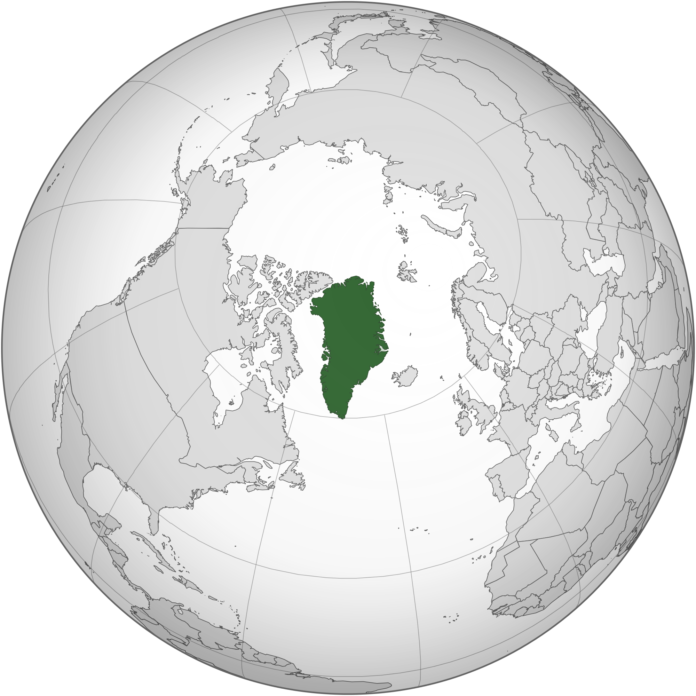The Changing Dynamics Between Greenland, Denmark, And The US

Table of Contents
Greenland's Growing Autonomy and its Implications
Greenland's journey towards self-governance is a central theme in understanding its relationship with Denmark and the US. While still officially part of the Kingdom of Denmark, Greenland enjoys significant autonomy, achieved through a series of self-governance agreements. This increased Greenlandic self-governance has profound implications for its future, and the nature of its relations with both Denmark and the US.
- Key Milestones:
- 1979: Home Rule Act granted Greenland significant control over domestic affairs.
- 2009: Self-Government Act further broadened Greenland's autonomy, transferring more powers from Denmark.
- Ongoing Debates: Discussions continue regarding full independence, raising questions about economic viability and future relationships.
The implications of greater autonomy are far-reaching. Economically, Greenland is seeking to diversify beyond its reliance on Danish subsidies and develop its own resource-based industries. Politically, this shift signifies a growing assertion of Greenlandic identity and national pride, shaping its international relations. The growing independence movement further complicates the traditional power dynamic between Greenland and Denmark, opening space for stronger ties with other nations, including the US. Understanding this evolution of Greenlandic identity is crucial to comprehending the evolving triangular relationship.
The Strategic Importance of Greenland in the Arctic
Greenland's strategic location in the Arctic makes it a focal point of geopolitical competition. Its vast territory, rich in potential mineral resources (rare earth minerals, for example), and its proximity to crucial shipping routes are attracting increased attention from global powers, including the US, Russia, and China.
- Geopolitical Competition: The Arctic's melting ice cap is opening new sea lanes, making Greenland a key player in global trade and military strategy. This has led to increased competition for influence in the region.
- Resource Exploration: Greenland's untapped mineral wealth presents significant economic opportunities but also raises environmental concerns and questions about sustainable development.
- Climate Change Impacts: The melting ice sheet poses significant challenges, including sea-level rise and the disruption of traditional ways of life. It also presents new navigational opportunities and access to previously inaccessible resources.
- Arctic Council's Role: The Arctic Council provides a forum for international cooperation on Arctic issues, including environmental protection and sustainable development. However, its effectiveness is often challenged by geopolitical tensions.
The US, particularly, views Greenland's strategic location as vital for national security, enhancing its ability to monitor and respond to potential threats in the region. This strategic importance inevitably shapes the dynamics of the relationship between Greenland, Denmark, and the US.
The Economic Relationship: Denmark, Greenland, and US Investments
Greenland's economy is largely dependent on fishing and Danish subsidies. However, there’s a growing desire for economic diversification, with potential opportunities in mining, tourism, and other sectors. This shift attracts significant interest from foreign investors, particularly the US.
- Greenlandic Economy: The fishing industry remains the backbone of Greenland's economy, but mineral extraction holds significant potential for growth. Tourism is also a growing sector.
- Danish Subsidies: Denmark provides substantial financial support to Greenland, shaping its economic dependence and political relationship.
- US Economic Engagement: US investment in Greenland's infrastructure and resource development is increasing, representing a significant shift in economic relationships. This includes interest in rare earth minerals vital for technological advancement.
- Economic Diversification Challenges: Successfully diversifying Greenland's economy requires careful planning, sustainable practices, and investments in human capital. Balancing economic development with environmental protection is a significant challenge.
The potential for increased US investment presents both opportunities and risks for Greenland. While it offers a path to economic independence, it also raises concerns about potential environmental damage and the influence of foreign powers.
The Role of Climate Change in Shaping the Dynamics
Climate change is not simply an environmental issue; it's a fundamental driver shaping the relationships between Greenland, Denmark, and the US.
- Melting Ice and Shipping Routes: The melting ice cap is opening new shipping routes, increasing Greenland's strategic importance and presenting both opportunities and challenges.
- Resource Accessibility: Climate change makes previously inaccessible resources more readily available, but also presents new environmental risks.
- International Collaboration: Addressing the challenges of climate change in the Arctic requires international cooperation, but geopolitical tensions often hinder collaborative efforts. The Greenland ice sheet's melting rate is a key indicator of global warming and poses significant global challenges.
Climate change is exacerbating existing tensions and creating new ones, fundamentally changing the landscape of the relationship between these three nations.
Conclusion
The relationship between Greenland, Denmark, and the US is in constant flux. Greenland's growing autonomy, its strategic Arctic location, and the increasing economic engagement of the US are reshaping a once-traditional power dynamic. Climate change acts as a catalyst, accelerating these shifts and creating new challenges and opportunities. Understanding these evolving dynamics is crucial for comprehending the future of the Arctic and the complex interplay between these three nations. To learn more, explore resources from the Arctic Council, Greenland's self-government, and academic research on Arctic geopolitics. The changing dynamics between Greenland, Denmark, and the US demand continued observation and analysis, as their relationship continues to redefine itself in the face of unprecedented change.

Featured Posts
-
 Will Androids New Features Win Over Gen Z I Phone Users
May 09, 2025
Will Androids New Features Win Over Gen Z I Phone Users
May 09, 2025 -
 Bitcoin Price Prediction 2024 The Influence Of Trumps Policies
May 09, 2025
Bitcoin Price Prediction 2024 The Influence Of Trumps Policies
May 09, 2025 -
 How Federal Riding Redistributions Could Impact Edmonton Voters
May 09, 2025
How Federal Riding Redistributions Could Impact Edmonton Voters
May 09, 2025 -
 The Impact Of The La Palisades Fires A List Of Celebrity Home Losses
May 09, 2025
The Impact Of The La Palisades Fires A List Of Celebrity Home Losses
May 09, 2025 -
 Jeanine Pirros Dc Attorney Bid The Impact Of A Past Incident
May 09, 2025
Jeanine Pirros Dc Attorney Bid The Impact Of A Past Incident
May 09, 2025
